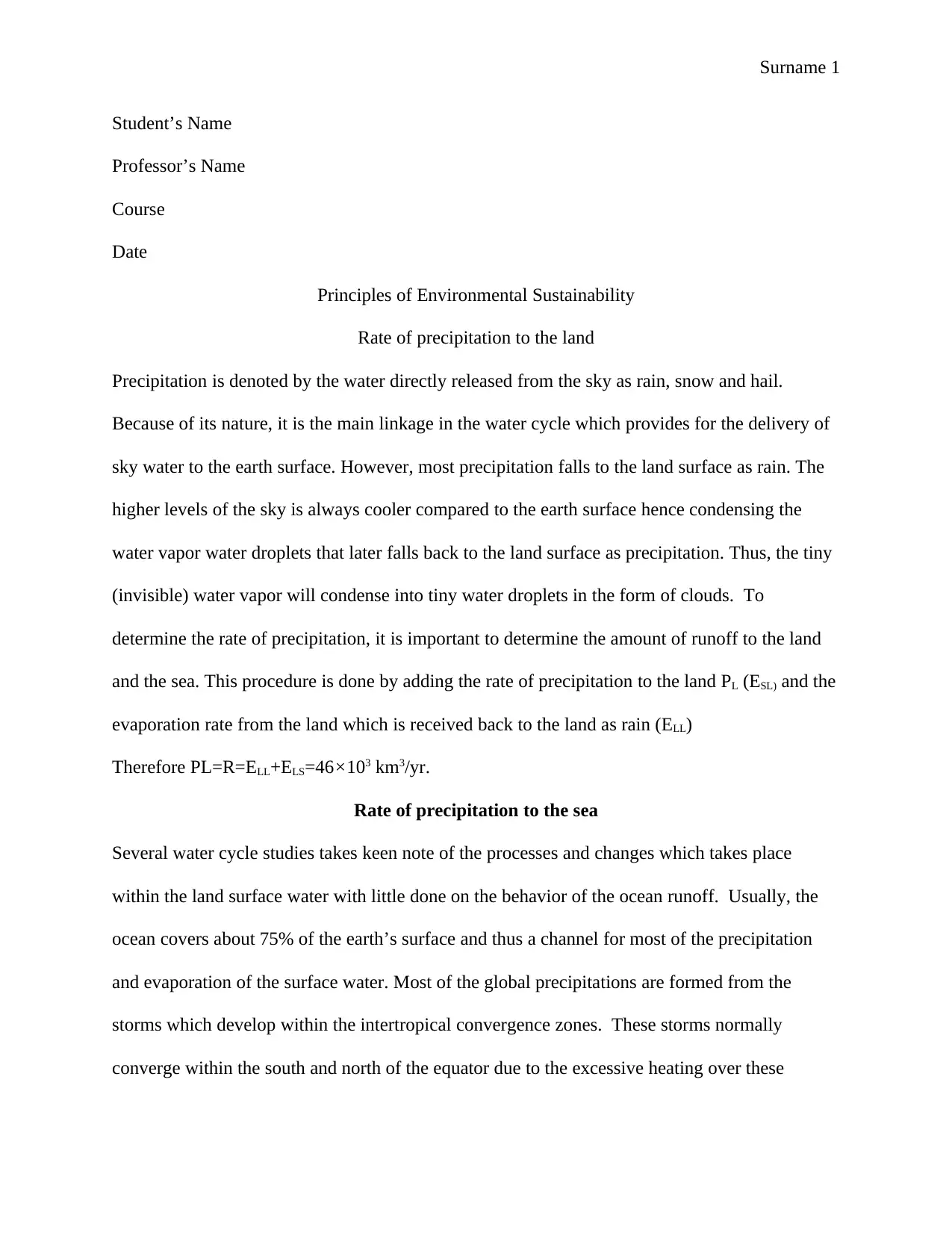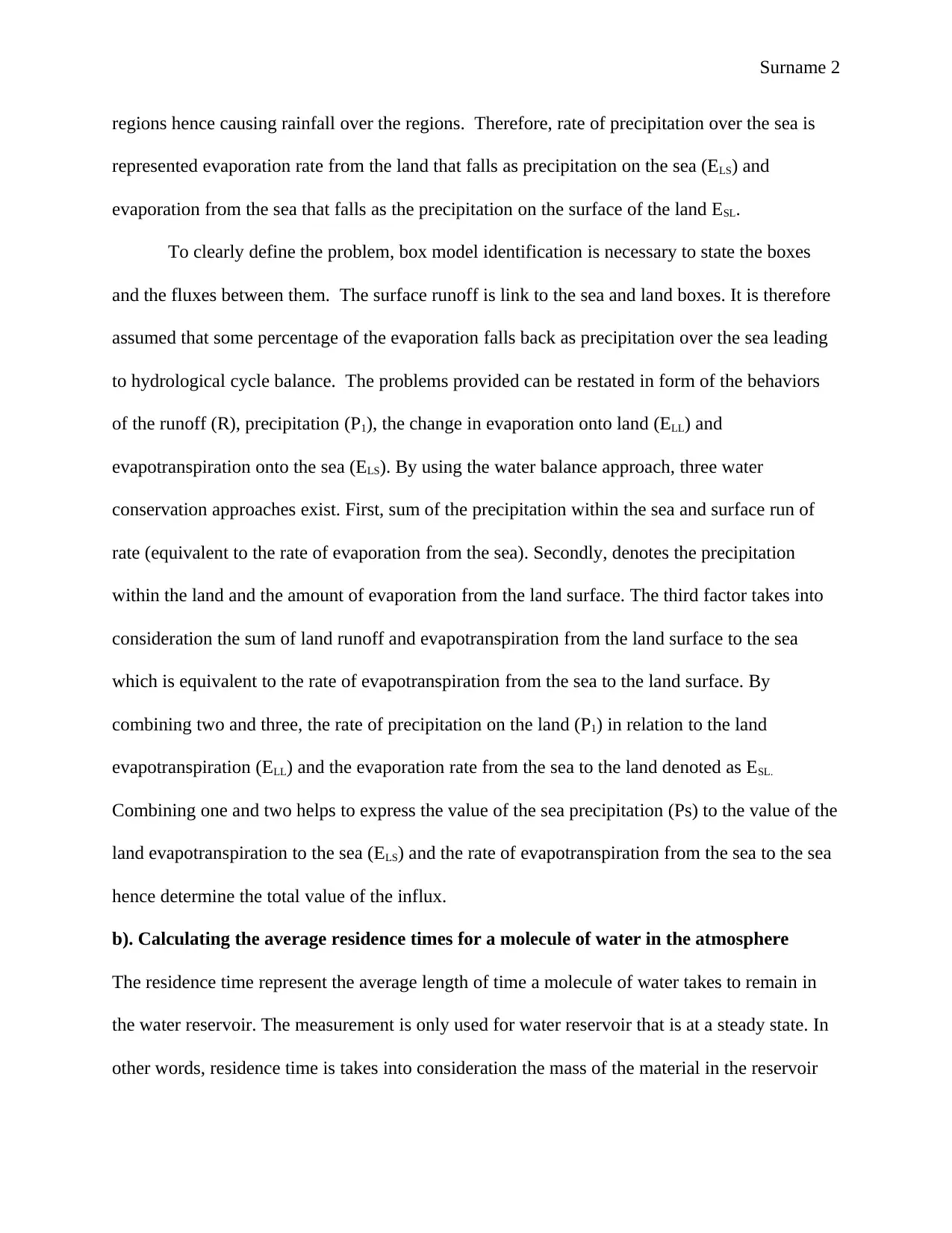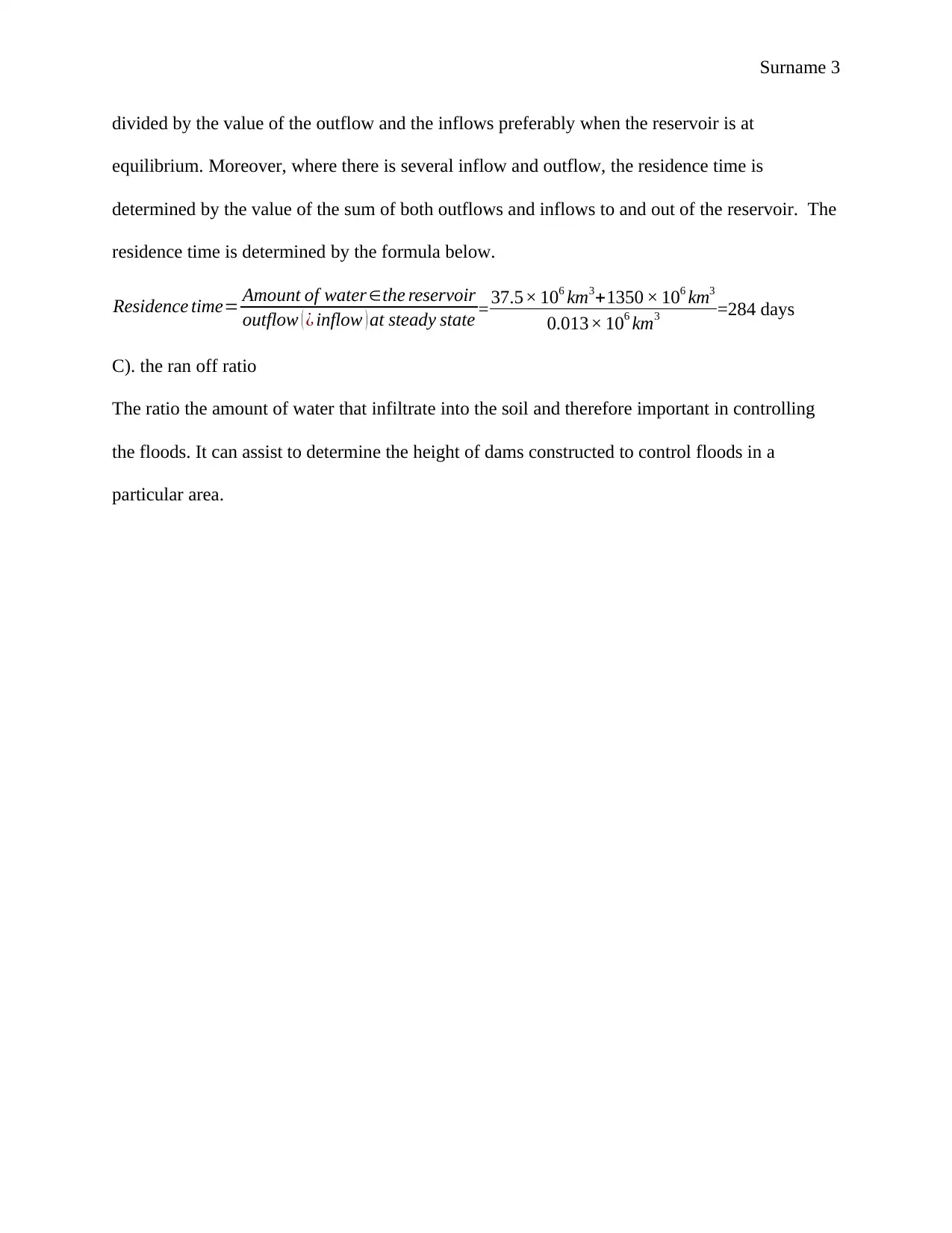Water Balance Model for Environmental Sustainability Analysis
VerifiedAdded on 2022/11/10
|3
|805
|418
Project
AI Summary
This project analyzes the principles of environmental sustainability through a water balance model, focusing on precipitation rates, runoff, and residence times. The assignment involves calculating key water balance expressions and constructing an Excel model to explore the implications of future climate changes on the hydrological cycle. The student describes the water cycle processes, including precipitation, evapotranspiration, and runoff, and defines concepts like the water footprint. The project also includes calculations for average residence times of water molecules in the atmosphere and the runoff ratio, crucial for understanding water resource management and potential flood control measures. The detailed analysis provides insights into the relationships between different components of the water budget and their significance in a changing climate. The student addresses the water balance equation, its components, and the factors affecting the hydrological cycle, providing a comprehensive overview of the topic.
1 out of 3





![[object Object]](/_next/static/media/star-bottom.7253800d.svg)